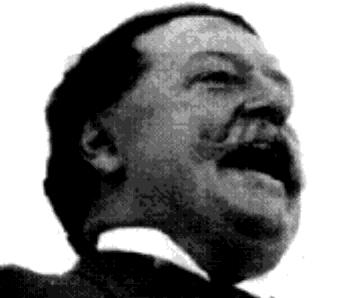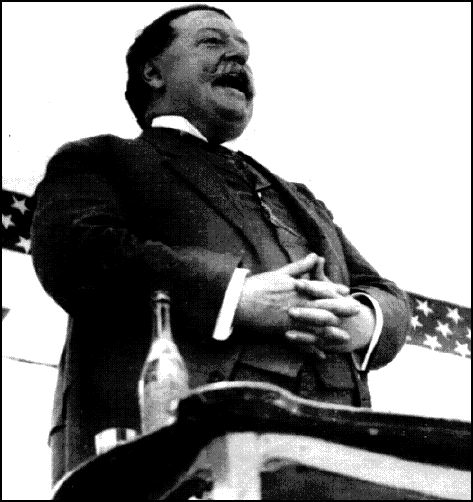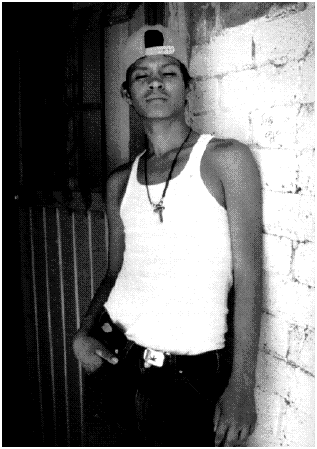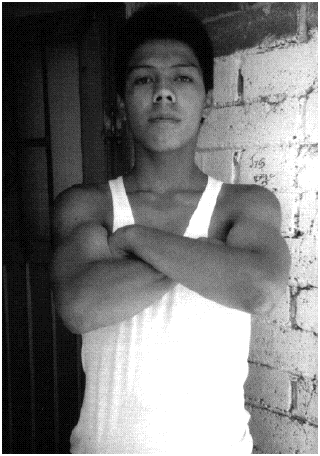William Howard Taft
Volume I
David H. Burton,
A. E. Cambell, Editors
(Ohio)

Volume I consists of nineteen speeches given between 1895 and 1908, ranging from subjects as abstruse as Writs of Injunction and a close study of the 13th, 14th, and 15th Amendments to the Constitution, to broad public issues such as Self-Rule for the Philippines, the rights of unions to strike, and abuses by large corporations and railroads.
In all these, Taft proves himself to be articulate, wordy, serious, even --- dare we say it? --- a man of heavy thoughts. He was one of those smart cookies who today we would relegate to teaching torts at some state university. Certainly, in the age of Weight- Further, as we read through "The Duties of Citizenship as Viewed from the Standpoint of Colonial Administration," Taft's 1907 address to the Philippine Assembly, or as we review, with him, his accomplishments as Civilian Governor in areas of sanitation, transportation, postal and telephone development and the creation of a Civil Service, we find ourselves wondering if English/ If you are even mildly interested it what it would be like to have an incoming president who could parse a whole sentence complete with modifiers and appropriate verb forms, you might look into some of these speeches by Taft. The photograph on the cover [See Fig. 3, below] is a definite knee-slapper. Which is more the pity. These speeches were given before Taft was elected President in 1908. A hundred years later, we can only envy a time when we could have a would-be president who could speak, knowingly, on, say, Roman (Civil) Law vs. Anglo-Saxon (Common) Law.
Which is more the pity. These speeches were given before Taft was elected President in 1908. A hundred years later, we can only envy a time when we could have a would-be president who could speak, knowingly, on, say, Roman (Civil) Law vs. Anglo-Saxon (Common) Law.

Kids
Lawrence J. Taylor
Photographs by Maeve Hickey
(Arizona)
 In the old days, they used to say that most problems of juvenile delinquency were soluble in water. Thus, many urban renewal projects in center city would include swimming pools for the long hot summers.
In the old days, they used to say that most problems of juvenile delinquency were soluble in water. Thus, many urban renewal projects in center city would include swimming pools for the long hot summers.
Nowadays, it seems that juvenile delinquency is equally soluble in film. Several projects, including ones sponsored by the Huntington Museum, involve giving kids cameras or videos and inviting them to go out and record the world around them. The hope is that instead of trading the cameras for dope, the young will actually use them, get involved in seeing themselves through other eyes. This will help solve their antisocial behavior problems.
Several years ago, Lawrence Taylor --- originally of Ireland --- started hanging out with the tunnel kids in Nogales, Sonora --- just across the border from Nogales, Arizona. Tunnel kids spend their time in or around two huge drainage tunnels, "seven feet high and several miles long" that run under the border. It's a favorite spot for "pollos" --- undocumented workers --- to make their way across without running into the U. S. Immigration Service. The tunnel kids are there to, depending on their mood, either offer their services to those who don't know how to do it, or, alternatively, or both, to rob them of their money.
Taylor first met these "cholos" at their chosen hang-out, Mi Nueva Casa, a half-way house in Nogales set up by Americans for the homeless young. His plans were to interest them in video and in taking photographs. As part of this project, and as Taylor spent more time with them, they took him along to their other homes --- a park, a shack in the hills where they slept, a street-corner where they cleaned car windshields for spare change called The Stupid Dummy.
We, along with Taylor, get to know twenty or thirty of these youngsters. We also get to know their day-to-day activities, which are, as you can imagine, terrible. Most of them are poor, homeless, without families, with no social service outside of Mi Nueva Casa --- strictly on their own in a poor border community. When they are not robbing hapless Central Americans trying to find work to the north, they are smoking dope, sniffing glue or spray paint, shooting or inhaling coke, having sex, whoring, and either beating up on each other or being beat up on by the police or by other gangs.
Most kids who are stuck in this border world are not necessarily the most quick-witted nor the most ambitious. (Ernesto Zedillo, the last president of Mexico, started off his life as a street kid in nearby Mexicali, and didn't end up sniffing glue or robbing pollos.) If you are going to write about what the author calls Les Misérables of the border, it's best that you should try to be another Victor Hugo, or another Charles Dickens. Taylor, unfortunately, isn't up to the job. There is also a matter of focus.
The underlying thought is that our friends here have no other choice but to do the street --- but that's like saying that people in prison are there through no choice of their own. Almost all of these cholos have families in other parts of Mexico, and for that predominately Catholic country, that amounts to a support system, no matter how miserable. They have, for better or for worse, and not entirely by default, opted for the street life. After all, that's where the action --- and the money --- is.
 Taylor has chosen a style of writing that is faintly antiseptic, even neo-socological. Thus, since the lives of these juveniles --- outside of sex, violence, and drugs --- are pretty ho-hum, the whole of Tunnel Kids comes across as rather ho-hum.
Taylor has chosen a style of writing that is faintly antiseptic, even neo-socological. Thus, since the lives of these juveniles --- outside of sex, violence, and drugs --- are pretty ho-hum, the whole of Tunnel Kids comes across as rather ho-hum.
What eventually garners our attention is not the panorama, but the story of one or two of the subjects who, it occurs to me, could have been the focus of the book --- along the lines of that sociological study from the 50s called Three Lives. There, the author chose to concentrate on three individuals, coming up with lengthy and fascinating reportage on their growing up, their day-
The first character that Taylor introduces us to may deserve such treatment. He is named "El Boston." When Taylor tells him that he wants to do videos of him and his friends, and asks what questions might be appropriate, El Boston immediately grabs a piece of paper and writes down forty-four possible questions, including,
Mind you, Tunnel Kids is not without interest. There's good insight into that weird mix of Mexican vs. American values, typical of the border. After all, whatever fallbacks El Boston, El Negro, and La Flor have that to save them are pure Mexico: family, the church, that very Mexican sense of pride and shame, and the inner power that comes from a matriarchal society.
It is also interesting to reflect on the fact that they are being helped along a path of self-destruct not by Mexican lacks, but by American know-how and technology. Spray paint was invented because your average bored home-owner north of the border didn't want to be bothered opening up a can of paint to touch up the fencing, or the garage door. Another of the barrio's drugs-
There are twenty-six photos of the youngsters Taylor has gotten to know and has written about by his associate Maeve Hickey. They are simple and bleak and honest, and, alone, are worth the price of the book.
All this from a delinquent seventeen-year-old street kid in Nogales (part of the surprise is not only the depth of the questions, but the fact that El Boston can write at all.) This character, along with one or two of the others, would well be worth a book.
Metaphysical
Poets
A Reader's Guide
George Williamson
(Syracuse)
We are, rather, talking about the fate of the poor English Major --- at the university level --- who is expected to ignore the poetry and instead, delve deeply into Shelley's birthplace and early schooling, or count the number of references to swans in the verse of Yeats, or, worse, suffer through Cliff note summaries in order to prepare for tests.
It is a futile, trying experience to have to put up with university English teachers who don't give a toot about the gorgeous sequence of lines in the poetry of D. H. Lawrence or Walt Whitman or Hart Crane, but rather, are concerned with those who supposedly influenced their writings. Your modern M.A. candidate is only allowed to be interested in computer counts and tedious life-histories of the author and a deadly summary of printing histories.
For those of us drawn to the strange world of the Metaphysicians --- Donne, Herbert, Marvell, et al --- to see them put into George Williamson's fact-grinder is enough to make us wring our hands and cry out for mercy, and Six Metaphysical Poets is an excellent example of the ground beef being spread about by these clots. "To His Coy Mistress," Marvell's great love poem of the 17th Century, appears in this volume on one page --- one page! --- in the following form:
This is not reality. The sun's chariot is always at our heels; all that lies before us is [sic] deserts of vast eternity, the opposite of our imagined space and beyond time. Our time and space are real between these limits.
Even his introduction, which presumably draws on earlier writers of criticism, leaves us blinking and gasping for air:
After Hoskins finds ironia related to catachresis and intimation, he treats it as a dissembling sort of amplification. In Fulke Grenville's Life of Sidney we find a vivid instance of the dissembling character of irony. The hazards of the subject in his own Treatise of Monarchy Grenville tells us, delayed its publication.
As my old Aunt Beulah would respond, "Say who?" Quotes from characters named Thomas Sprat and Thomas Diggs made us think at first that Williamson had mounted a gigantic spoof, had created for the sheer devilment of it a whole generation of critics, à la Nabokov. But alas, an examination of the text convinces us that this turkey is quite serious. Not serious enough, however. No matter how far we searched, we could find no reference to Donne's great fantasy poem,
Go and catch a falling star,
Get with child a mandrake root,
Tell me, where all past years are,
Or who cleft the Devil's foot.